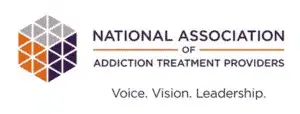Methadone is a prescription medication used to treat opioid withdrawal and pain. The FDA classifies this drug as a Schedule II controlled substance, meaning it has a high potential for abuse and dependence.
People who take methadone can develop tolerance. When drug tolerance occurs, higher doses of the drug are required to produce the same effect over time. This increases an individual’s risk of abusing the medication and becoming addicted to it. A person can also become dependent on methadone, causing withdrawal symptoms to occur if they abruptly stop using the drug. For these reasons, it is important to carefully and continuously monitor the dosage of anyone who is prescribed methadone.
What Is Methadone?
Methadone is an opioid medication used to prevent or ease withdrawal symptoms from certain opioid drugs. It may also be prescribed to relieve severe pain from chronic diseases, including cancer pain. Although methadone is utilized as a treatment for people who are addicted to opioids, the drug itself may lead to addiction. To reduce the risk of drug abuse, people who are prescribed methadone are closely monitored to ensure they are safely taking the medication and not exceeding the prescribed dosage. Those who do end up taking more than prescribed or misusing the medication in any way are at significant risk for methadone addiction.
Is Methadone an Opiate?
Opioids are a class of drugs that bind to opioid receptors in the body. These drugs may be natural, synthetic or semi-synthetic. Opiates are limited to natural opioids, such as heroin and morphine. Sometimes, these terms are mistakenly used interchangeably; however, there is a clear difference between them.
This Season, Give Yourself the Gift of a Fresh Start.
Whether you are struggling with addiction, mental health or both, our expert team is here to guide you every step of the way. Don’t wait— reach out today to take the first step toward taking control of your life.
Methadone is a synthetic opioid, meaning it is not a natural ingredient but rather a man-made chemical substance produced in a lab. Therefore, methadone is considered an opioid but not an opiate.
Why Is Methadone Addictive?
Methadone is a full opioid agonist, meaning it powerfully binds to opioid receptors in the brain and other parts of the body. It is a long-acting drug, and it blocks the pleasurable feelings that would occur if someone relapsed and abused an opioid.
Methadone is a narcotic with a high potential for abuse and dependence, and it can lead to addiction as well. Tolerance can also occur with methadone, meaning higher doses are needed to feel the same effects. An individual may abuse methadone and take higher amounts to achieve the desired effects. Misusing a drug in this manner can lead to addiction as the mind and body become dependent on it.
What Does Methadone Do?
Although high doses are required to produce euphoria, methadone can still generate these pleasurable feelings because it binds so strongly to the opioid receptors in the brain. Patients using this drug may experience euphoria; however, because methadone has a slower onset of action and lasts longer, people typically do not experience an immediate ‘high’ followed by a ‘crash’ and subsequent cravings. It can also cause sedation, so it is recommended that people do not drive while taking this medication.
Because it binds to opioid receptors and blocks NMDA receptors, methadone provides relief from severe pain associated with chronic conditions, including cancer and nerve pain.
What Is Methadone Used For?
Methadone is a medication prescribed to individuals who are diagnosed with opioid use disorder (OUD) or suffering from severe pain.
Methadone for Pain
Methadone is not used as a first-line agent for pain relief. It is reserved for patients who suffer from severe pain. These patients typically require around-the-clock pain medicine and have serious chronic conditions, such as cancer, arthritis or neuropathic pain.
Methadone for Opioid Withdrawal
Someone who is addicted to opioids will experience uncomfortable and sometimes dangerous withdrawal symptoms when they stop using opioids. Methadone is medication that helps prevent or minimize these withdrawal symptoms. It also works by blocking the effects of other opioids in the event that a person with opioid addiction relapses.
Methadone vs. Suboxone
Suboxone is a combination medication consisting of buprenorphine and naloxone, and it is also approved to treat OUD. Unlike methadone, buprenorphine is a partial opioid agonist, meaning effects like euphoria may occur but are weak. Additionally, because it is a partial agonist, the positive effects will plateau. This means that after a certain dosage, increasing the dosage will not result in stronger euphoria.
Naloxone, the other active ingredient found in Suboxone, is an opioid antagonist. It binds to opioid receptors, reversing and blocking the effects of opioid drugs. Because methadone and Suboxone can both cause dependence, withdrawal symptoms may occur with either medication.
Methadone vs. Buprenorphine
As a partial opioid agonist, buprenorphine is associated with a ceiling effect. This means that taking higher dosages will not produce a ‘high.’ Like methadone, buprenorphine is a synthetic opioid; however, because it is a partial agonist, it is believed to have a lower abuse potential.
Although these medications are used to ease withdrawal symptoms associated with opioid addiction, it is important to keep in mind that methadone and buprenorphine can lead to withdrawal and overdose if used improperly. However, an overdose symptom like respiratory depression may be less severe with buprenorphine due to its ceiling effect.
Signs of Methadone Addiction
Even though methadone is used to treat addiction to opioids, the drug itself is an opioid and can also lead to addiction. It is important to recognize signs of addiction to methadone so that treatment may be adjusted. Signs of methadone addiction resemble those of an opioid addiction and include:
- Uncontrolled cravings
- Daytime drowsiness and change in sleep habits
- Weight loss
- Flu-like symptoms, such as fever, fatigue, achiness and headache
- Lack of hygiene
- Avoiding family and friends
- Stealing from family, friends, strangers or places of business
- Experiencing withdrawal symptoms when the medicine is stopped
Methadone Withdrawal
Due to its long half-life, symptoms of withdrawal from methadone typically begin 24 to 36 hours after the last dose. These withdrawal effects may last between several weeks and six months. Symptoms of methadone withdrawal include:
- Anxiety
- Sleeping problems
- Restlessness
- Sweating
- Feeling tired and run-down
- Runny nose and watery eyes
- Nausea, vomiting and diarrhea
- Muscle pain
- Drug cravings
- Depression
Methadone Half-Life
Methadone has a longer half-life than many other opioids. The half-life of methadone, or the time it takes for half of the drug to be eliminated from the body, ranges from eight to 59 hours. The half-life of this drug will vary depending on the individual. For instance, someone who has become tolerant to opioids will eliminate half of the drug in approximately 24 hours. On the other hand, the half-life for someone who has not really used opioids is closer to 55 hours.
Can You Overdose on Methadone?
It is possible to overdose on methadone. If you suspect an overdose, contact 911 immediately so emergency personnel can address overdose symptoms and any dangerous complications resulting from the overdose.
Signs and symptoms of a methadone overdose include:
- Pinpoint pupils
- Slow breathing
- Difficulty breathing
- Sleepiness
- Cold and clammy skin
- Being unresponsive
- Limp body
More serious symptoms of a methadone overdose include:
- Low blood pressure
- Slowed heart rate
- Coma
- Cardiac arrest
Finding Help for Methadone Addiction in Colorado
Methadone addiction can be difficult to address on your own, but help is available. The Recovery Village at Palmer Lake is an accredited facility that specializes in an evidence-based treatment approach to addiction. Our full continuum of care starts with medical detox, which involves the gradual removal of the addictive substance from the body. This is done under the supervision of a licensed medical professional to prevent or ease any withdrawal symptoms that may arise.
We tailor our treatment plans to your individual needs. After detox, you and one of our qualified health care providers will determine whether inpatient rehab, partial hospitalization programming (PHP) or outpatient rehab is appropriate. Inpatient rehab involves living on-site and provides 24/7 clinical support, individual and group therapy, recreational therapy, medication management and treatment for any co-occurring mental conditions. PHP provides many of the same treatments but gives the client more autonomy, and outpatient rehab allows the individual to maintain obligations with family and work.
The entire staff at The Recovery Village at Palmer Lake is dedicated to helping those struggling with addiction begin a healthier, substance-free life in recovery. If you or someone you know is struggling with methadone addiction, contact us today to speak with a knowledgeable member of our team and learn more about treatment options that can work well for you.









